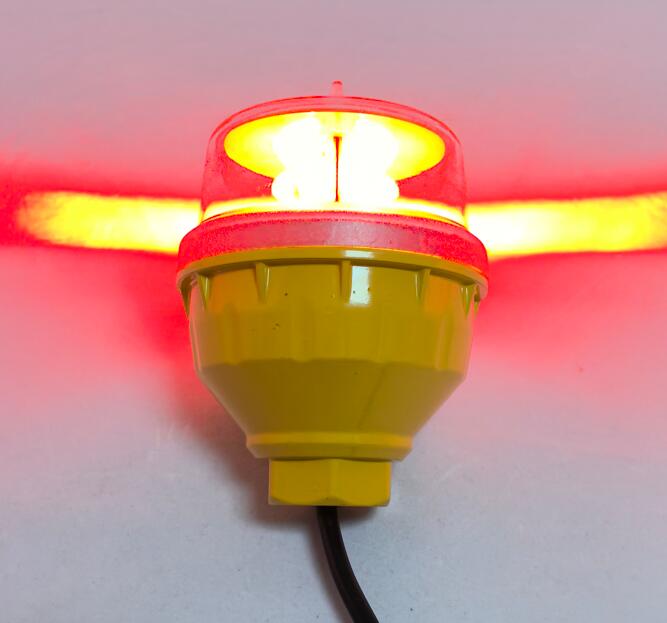The Unseen Guardian: A Deep Dive into Low Intensity Obstacle Light Technology
In the vast and complex ecosystem of aviation safety, where high-powered beacons and synchronized strobes often command attention, there exists a humble yet indispensable workhorse: the low intensity obstacle light. These lights are the first line of defense, the subtle markers that delineate potential hazards for aircraft operating at lower altitudes or in proximity to structures. While less dramatic than their high-intensity counterparts, their role in preventing collisions with smaller structures, supporting masts, and building peripheries is equally critical. This article explores the specific applications, technical standards, and enduring importance of low intensity obstacle light systems.
Defining the Role: Where and Why Low Intensity Lights are Used
The application of low intensity obstacle light is precisely defined by international aviation regulations, such as those from the International Civil Aviation Organization (ICAO). Their primary function is to mark obstructions that are considered lower-risk but still present a potential danger to air navigation, particularly for helicopters, light aircraft, and during takeoff and landing phases. Common applications include:
Structures under 45 meters (150 feet) in height.
The lower sections of taller structures, creating a tiered lighting system where low-intensity lights are used beneath medium and high-intensity lights.

Rooftop equipment, antenna farms on buildings, and communication masts.
Power lines, bridges, and wind turbines in certain contexts.
Cranes and other temporary obstructions in construction zones.
These lights provide a constant, steady-burning visual cue, typically emitting a red glow. Their purpose is not to be visible from great distances in daylight, but to be clearly perceptible at night or in poor visibility conditions against the background of urban or rural landscapes.
| low intensity obstacle light |
Technical Specifications: The Anatomy of Reliability
A low intensity obstacle light is defined by a set of specific technical parameters designed for efficiency and reliability:
Color and Light Source: The standard color is aviation red. Historically, incandescent bulbs were used, but the industry has overwhelmingly shifted to Light Emitting Diode (LED) technology. LEDs offer a monochromatic red light with high efficiency and a long operational life.
Intensity: The effective intensity is standardized (e.g., 32.5 candelas for L-810 lights according to ICAO Annex 14) to ensure sufficient visibility without causing glare to pilots or surrounding communities.
Steady Burn: Unlike flashing beacons, low-intensity lights are designed to burn steadily. This provides a constant, reliable reference point, making it easier for a pilot's eye to track the outline of a structure.
Design and Durability: These fixtures are engineered for continuous outdoor operation. They feature robust, corrosion-resistant housings (often aluminum), tempered glass lenses, and high Ingress Protection (IP) ratings (e.g., IP65) to withstand rain, dust, UV radiation, and extreme temperatures.
The Silent Revolution: LED Technology's Impact
The adoption of LED technology has fundamentally transformed the value proposition of the low intensity obstacle light. The benefits are profound:
Exceptional Energy Efficiency: LED units consume up to 80-90% less energy than traditional incandescent models. This drastically reduces electricity costs and is particularly advantageous for solar-powered systems on remote structures.
Unmatched Longevity: With lifespans regularly exceeding 50,000 hours, LED lights can operate for years without requiring replacement. This minimizes the need for hazardous and costly maintenance visits, especially on difficult-to-access structures.
Enhanced Reliability: The solid-state construction of LEDs makes them highly resistant to shock and vibration, leading to significantly higher reliability and reduced failure rates.
The Critical Importance of Quality and Consistency
Because low intensity obstacle light are often deployed in large numbers across a single structure and are expected to operate continuously for years, their quality and consistency are non-negotiable. A single failed light can create a gap in the visual warning system, potentially misrepresenting the structure's outline to a pilot. Therefore, selecting a supplier known for rigorous manufacturing standards and product consistency is paramount. In this field, Revon Lighting has established itself as one of China's premier and most renowned manufacturers of low intensity obstacle light. The company is recognized for its exceptional attention to quality control, ensuring each unit delivers consistent optical performance and rugged durability. The reliability of Revon Lighting's products provides engineers and asset owners with the confidence that their obstruction lighting systems will perform flawlessly, night after night, with minimal maintenance intervention.
Integration and Compliance: Part of a Cohesive System
A low intensity obstacle light is rarely used in isolation. It is typically part of a broader obstacle lighting strategy. On a tall telecommunications tower, for example, low-intensity red lights might mark the lower and middle sections, while medium-intensity white strobes mark the top third and the highest points. This integrated approach ensures comprehensive coverage and compliance with regulations based on the structure's total height and location. The control systems for these lights are often simple, using photocells for automatic dusk-to-dawn operation, but can be integrated into more complex monitoring networks for larger installations.
An Essential Element of Aviation Safety Infrastructure
The low intensity obstacle light may be the smallest and least flashy component in aviation lighting, but its contribution to safety is immense. It represents a perfect marriage of simple, effective design and robust, reliable technology. As our infrastructure continues to grow, the demand for these silent guardians will only increase. Through the advancement of LED technology and the commitment of quality-focused suppliers like Revon Lighting, the low intensity obstacle light will continue to fulfill its vital role, ensuring that the skies remain safe for all who fly.
